Can Congress Deliver Happy Days for Fish, Fishermen?
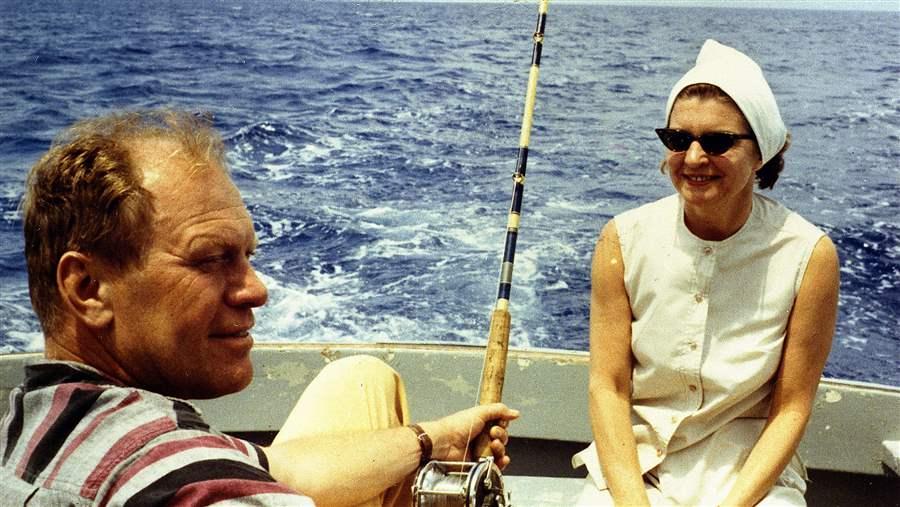 © Getty Images
© Getty ImagesPresident Gerald Ford relaxes on a Caribbean deep-sea fishing trip in 1972. Four years later, he signed into law the landmark fishery legislation that is now known as the Magnuson-Stevens Fishery Conservation and Management Act.
To give you a break from the onslaught of 2015 year-in-review stories, let’s test your memory of a bygone era. Can you pinpoint the year that:
- “Happy Days” was the most popular television show?
- A gallon of gas cost 59 cents?
- “Rocky” won the Oscar for best film?
- The U.S. Navy tested the Tomahawk cruise missile?
- Steve Jobs and Steve Wozniak formed Apple Computer?
The year? 1976.
It was a particularly memorable year for me, because I was settling into a stint with the Coast Guard. Yet I was unaware that at the same time, Congress was crafting a bill that would come to dominate my career.
The law, which later was named the Magnuson-Stevens Fishery Conservation and Management Act in honor of Senators Warren Magnuson (D-WA) and Ted Stevens (R-AK), represented a dramatic leap in management of ocean fish resources in the U.S. exclusive economic zone (EEZ), which encompasses 3.4 million square miles of sea just off our coastline.
The Magnuson-Stevens Act, the nation’s overarching law on marine fisheries management, affects commercial and recreational fishermen and every player in the seafood supply chain.
President Gerald R. Ford signed the act into law on April 13, 1976. In the runup to the 40th anniversary, we at The Pew Charitable Trusts are both commemorating the progress that the legislation has driven and calling on Congress, as it renews the law, to strengthen it to meet today’s fish management challenges.
We’ve got some great fish tales in our weekly online series, which has been running in the lead-up to April. You can read about the fascinating fish, people, technology, and environmental issues that make up the world of U.S. fisheries management.
But to best understand how Congress should amend the law, it helps to know some of the history behind it.
Magnuson-Stevens was originally intended to protect U.S. fish resources from foreign fleets. Before passage of the act, the U.S. claimed sovereignty on only the first 12 miles of water from our coastlines. In the 1970s, other countries sent ever bigger and more-efficient fishing and processing vessels to the waters just beyond that limit. Industry leaders, recognizing that a resource that once seemed inexhaustible was being rapidly depleted, turned to Congress for help.
Farsighted commercial and recreational fishermen, marine scientists, and legislators shaped the law that Congress eventually passed. They believed that the nation’s rich fishing grounds could feed generations of Americans far into the future, but only if catches were well-controlled. Many of them knew that we needed to leave enough fish in the oceans to ensure that populations could regenerate instead of declining drastically over time.
The law expanded our EEZ to 200 miles offshore. And while it was well-designed, it was not watertight. Like their foreign counterparts, U.S. fishermen were developing the technological power and capacity to wear down fish populations, and in many places they did. In the years after the law took effect, overfishing took a severe toll on some species, such as cod in New England and red snapper in the Gulf of Mexico.
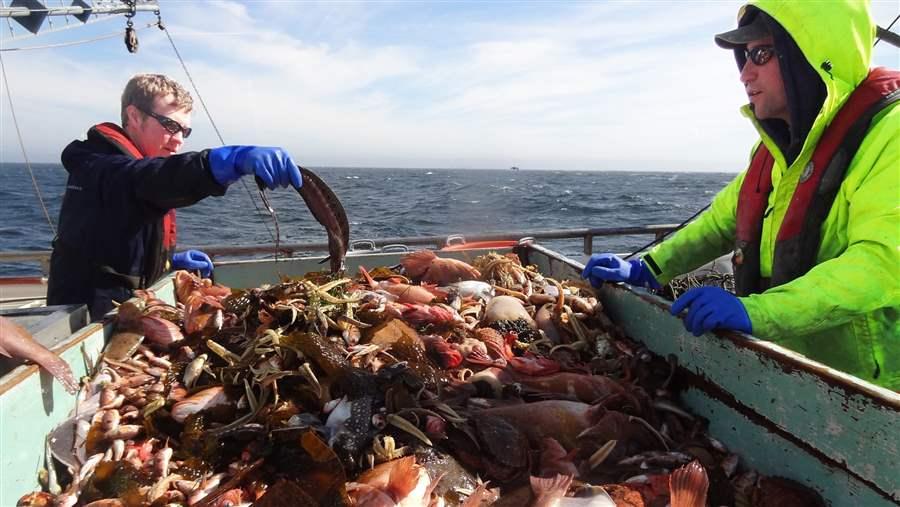 © National Oceanic and Atmospheric Administration
© National Oceanic and Atmospheric AdministrationNOAA scientists sort through catch they gathered for study in summer 2012 off the U.S. West Coast. Scientific data and research inform fishery management decisions.
Over time, leaders in the scientific, conservation, and fishing communities persuaded Congress to close loopholes in the Magnuson-Stevens Act that had allowed overfishing and other poor management practices. In 1996 as well as 2006, Congress renewed the law, strengthening procedures for setting and enforcing limits on catches each time, as well as rebuilding depleted stocks, protecting essential habitats, and minimizing unintentional catch or bycatch.
The result: a turnaround for America’s fish. Since 2000, recovery plans have helped rebuild to healthy levels 39 fish populations, including Pacific coast canary rockfish and Gulf of Mexico king mackerel. However, 36 of the approximately 450 species and groups of federally managed fish are still below sustainable levels.
To address that, Congress should update Magnuson-Stevens to shift the focus of fisheries management from setting rules on one fish at a time to looking at our ocean resources as a whole when managing fishing. With each passing year, science has taught us much more about the interdependent nature of marine ecosystems, and our policies should reflect that knowledge.
In setting fishing rules, managers should consider habitat and food needs, predator-prey relationships, and the roles fish play in their ecosystems. Our updated rules should also factor in environmental challenges, including warmer and more acidic waters.
This comprehensive approach is called ecosystem-based fisheries management, and incorporating it into our policies can help lay a better foundation for our fishing future. And my hope is that when updating the Magnuson-Stevens Act, Congress will encourage fishery managers nationwide to more strongly embrace this new approach.
Magnuson-Stevens is the bedrock of one of the world’s best fishery management systems. It has helped a wide range of businesses in the seafood, fishing, and tourism industries thrive.
These businesses are the backbone of many coastal economies. In 2012, according to the National Oceanic and Atmospheric Administration’s Fisheries Service, domestic harvest, export, distribution, and retailing of seafood in the U.S. generated about $140 billion in sales and employed about 1.3 million people. Recreational fishing added about $58 billion to that total and supported 381,000 jobs.
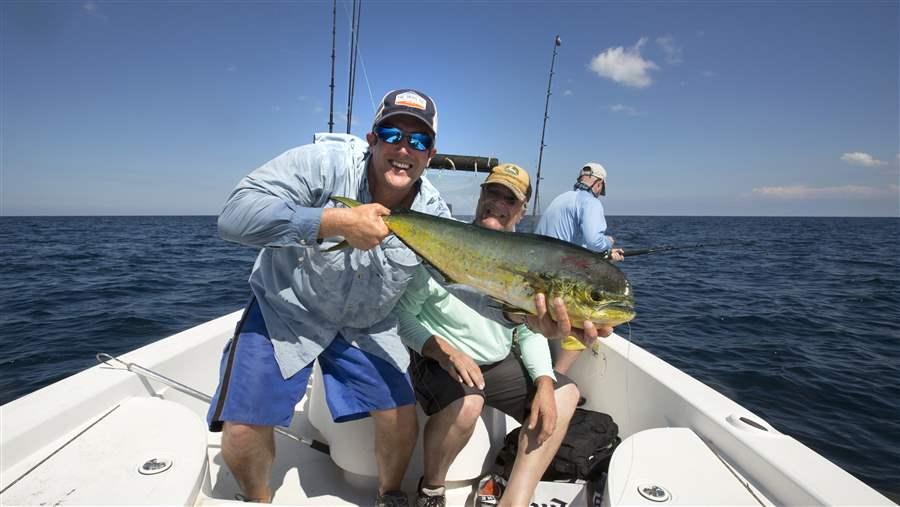 © The Pew Charitable Trusts
© The Pew Charitable TrustsRecreational fishermen show off their catch of dolphinfish, also known as mahi-mahi, off southeast Florida. Federal fish law affects everyone who fishes in U.S. waters.
A forward-looking update to Magnuson-Stevens would be a big step in helping make and keep these industries—and U.S. fisheries in general—healthy and competitive. Again, please read Pew’s ongoing Web series for details on the improvements we need.
Enjoy your holidays, and here’s to a healthy, prosperous, and fulfilling year for all of us. And my deepest thanks for reading, and sharing, my columns.
Lee Crockett directs the U.S. oceans program at The Pew Charitable Trusts.


America’s Overdose Crisis
Sign up for our five-email course explaining the overdose crisis in America, the state of treatment access, and ways to improve care
Sign up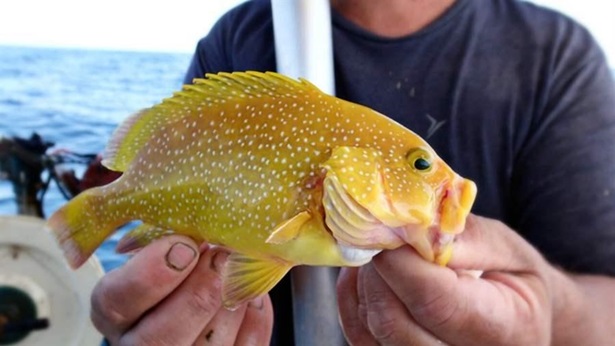
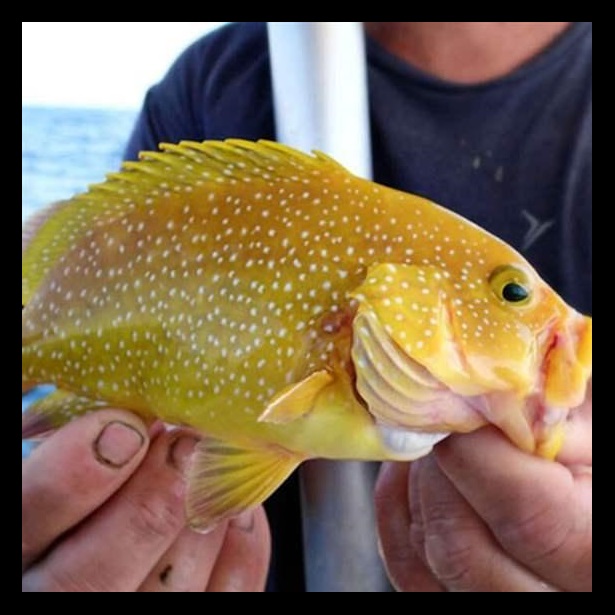
The Magnuson-Stevens Act at 40
Reasons major U.S. fishing law should shift to big picture management
Learn More








